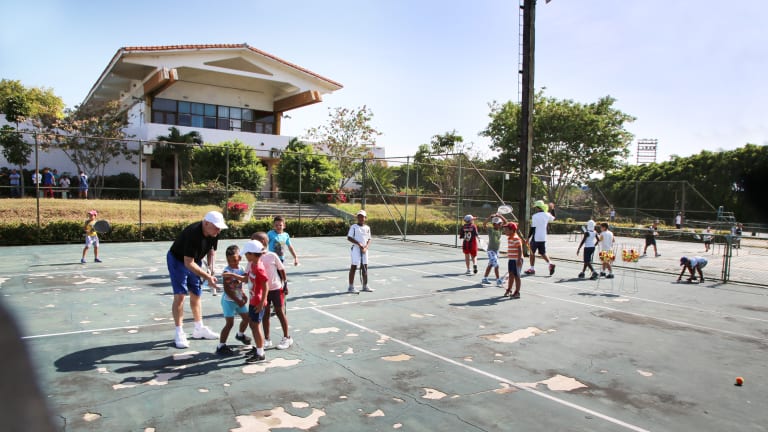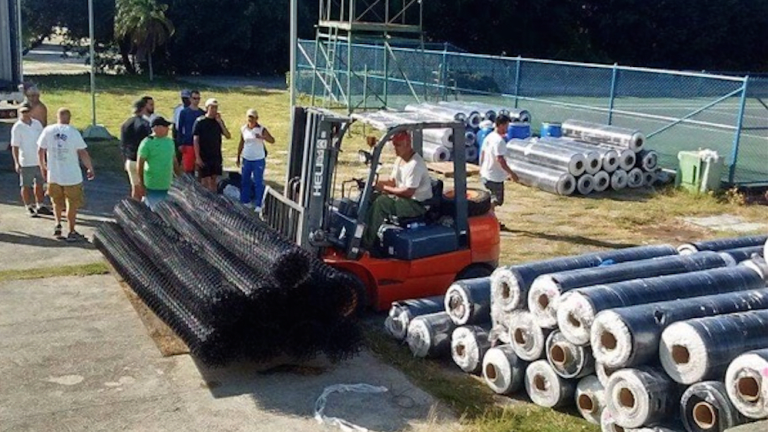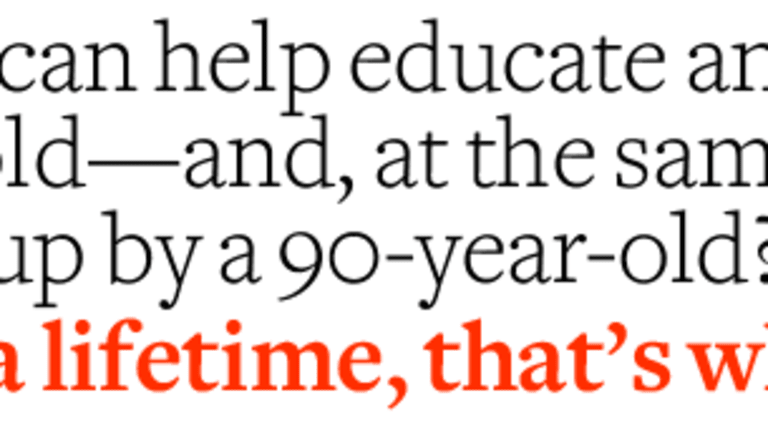“That summer was something else,” Agna says of his first year with Kids on the Ball. His courts were so bustling that he found himself dividing them into smaller and smaller sections so he could include more kids.
Agna felt some of the same excitement that he had felt on the anything-goes public facilities of Ohio. One difference, though, was the makeup of his students. In recent years, the Burlington area has taken in refugees from Nepal, Africa, Syria and Bosnia. Agna soon found himself teaching many of their kids how to play tennis. It reminded him again that the value of the sport comes not from the way it teaches people how to compete, but from the way it teaches them how to cooperate. It helps, as Agna says, give a “rhyme and reason” to life.
“These are confused and anxious kids,” Agna says of his refugee students. “They’re worried about their citizenship. Tennis offers a community and a purpose. On the court, they have to get along with their opponents. They have to learn to call the lines. They have to learn to play fair.”
According to Agna, though, it isn’t just vulnerable or underprivileged kids who have benefited from his programs. So have the middle-class boys and girls who volunteer to teach them.
“Working in our program helps get affluent kids out of their bubble,” Agna says. “They have a better sense of the whole world, and they have a chance to be helpful, which they don’t always have in other parts of their lives.”
By 2015, while Kids on the Ball was thriving, Agna was feeling restless again. A lightbulb went off when he saw a segment on CBS This Morning about a trip that the jazz trumpeter Wynton Marsalis had made to Havana. Agna was fascinated by the old Cuban city, which had recently begun to welcome visitors from the United States.
“My wife turned to me and said, ‘You’ve been looking for this forever,’” Agna says. “She was right. I thought, ‘I’ve got to see what it’s like there.’”
With the help of the Cuban American Friendship Society (CAFS), Agna and his family flew south and visited the National Tennis Center in Havana. What did Agna find?
“Very resilient people,” he says. “And the worst tennis courts ever.”
Agna felt that the fastest way to get kids in Cuba playing tennis was to fix the courts. With CAFS, he embarked on two years of fundraising, traveled back and forth to Havana 13 times and hired Hinding Tennis, a Connecticut-based court-construction company, to do the renovation.


